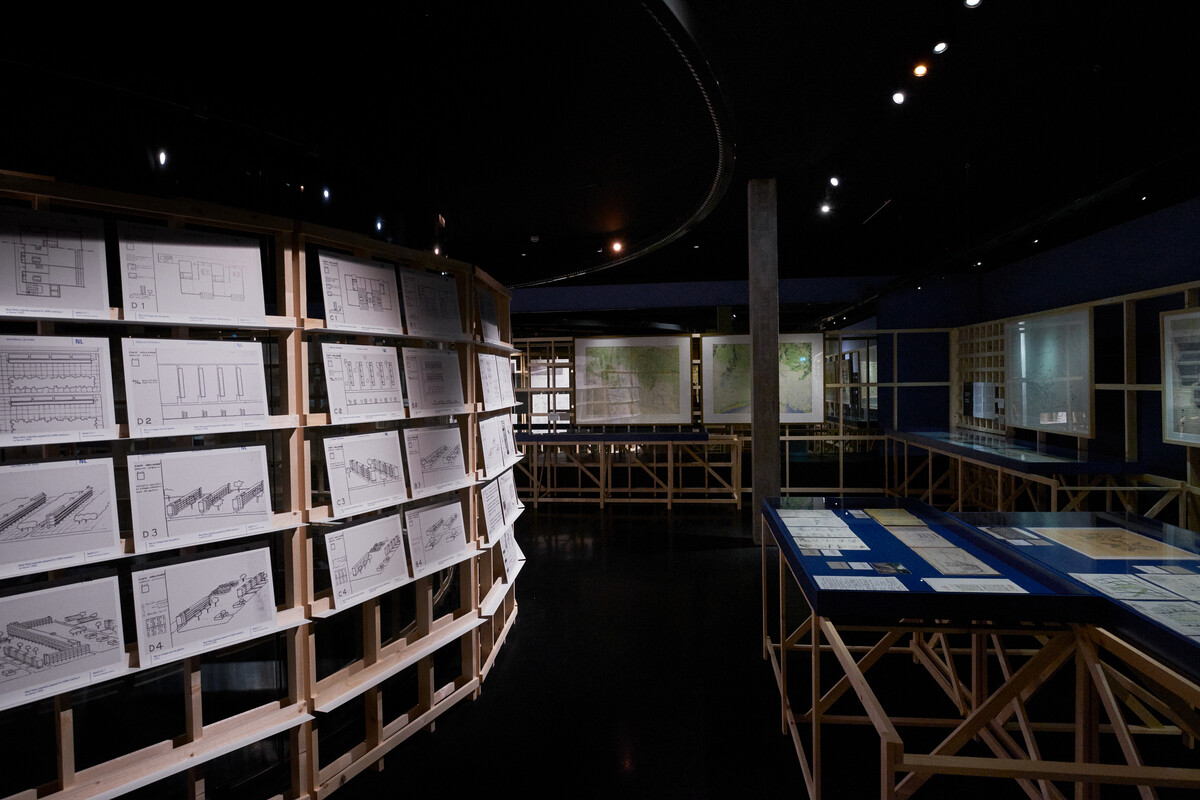Expanding Architecture
October 19, 2018–March 10, 2019
Museumpark 25
3015 CB Rotterdam
The Netherlands
The research installation Habitat: Expanding Architecture captures a key moment in the history of architecture and urban planning: the tenth CIAM conference at Dubrovnik in 1956. Here the concept “habitat” was a central theme: an expanding understanding of architecture was proposed through a new ecological approach. Disciplinary autonomy was dismissed for a relational idea of architecture as part of a larger, dynamic whole.
Habitat: Expanding Architecture is a project initiated by the Jaap Bakema Study Centre and curated by Dirk van den Heuvel. The Jaap Bakema Study Centre started life in 2013 as collaboration between Het Nieuwe Instituut and TU Delft’s faculty of Architecture and the Built Environment. Its goal is to instigate academic research at the intersection of urgent societal issues, on the basis of the holdings of the State Archive for Dutch Architecture and Urban Planning of Het Nieuwe Instituut.
Habitat presents an archival reconstruction of the material CIAM delegates showed at Dubrovnik in 1956. In addition to work by major postwar Team 10 architects such as Jaap Bakema, Aldo van Eyck and Alison & Peter Smithson, exhibits include work by James Stirling, Piero Bottoni, Arne Korsmo, Geir Grung, the Finnish group PTAH and the Portuguese CIAM Porto group. Alongside the historical documents from Het Nieuwe Instituut a selection from private collections are included to further illustrate how ecological approaches to architecture have been interpreted in different ways since then: phenomenal studies on the connection between settlement and landscape formation by Pjotr Gonggrijp, transformative interpretation of the Dutch delta landscape by Frits Palmboom, ecological interventions by planner and activist Joost Váhl, and discussions about Delft’s Tanthof district designed by Van den Broek and Bakema together with the Tanthof workgroup. Various 1980s projects are also showcased, including the New Netherlands project and the Patchwork Metropolis study by Willem Jan Neutelings.
Habitat is the first in a series of Total Space programme installations following the Structuralism project of 2014. Total Space explores interdisciplinary exchanges between the fields of architecture, urban planning, anthropology and systems theory. Relatively recent concepts such as ecology and environment are important, as are concepts of networks and megastructures. From the first propositions for networked cities and megastructures in the 1950s and 1960s, up to developments such as smart cities and virtual territories today, the concept of a total, all-encompassing space remains a recurrent motif. The core premise is that architecture and urban planning can be understood as ecological systems. The point of departure becomes interactive networks, rather than discrete objects and domains.
The installation serves as a platform for further study and conversation about the meaning of “habitat” then and now: what is the significance of habitat as a new ecological paradigm for architecture and planning—whether in a historical or a contemporary context? What is the significance of no longer thinking in terms of objects, form and construction, but rather in terms of processes, systems and networks? Habitat incorporates a programme of seminars and conversations with international guests, students, historians, architects and planners. Philosopher and partner at RAAAF Erik Rietveld gave a lecture about the role of ecological psychology and the notion of affordances for their studio’s work, Alessandra Ponte (Université de Montréal) spoke about her expeditions to the mining structures and landscapes of Northern Canada, and Leonardo Zuccaro Marchi discussed the emergence of “Habitat” in architectural discourse during the 1953 CIAM meeting in Sigtuna, Sweden.
This Thursday, December 13, Hadas Steiner (University at Buffalo) will give a lecture about the history of ecological thinking in architecture and urban planning. She will talk about how this concept entered the architectural discourse through the biological sciences, and how the understanding of these terms changed throughout the 1950s, 60s and 70s as they were variously reinterpreted and employed by architects like Peter and Alison Smithson or John McHale. Among other topics, she will discuss the ornithological architecture of Cedric Price, who designed the aviary for the London Zoo.

